
MICROGAME - DESIGN WEEK
MY ROLES: GAME DESIGNER, 2D ARTIST, ANIMATOR
Team Members: Aunonna K., Stefan A., Grace Y., Olivia W., Justin B.
Desert Defusal is a Microgame made by a team of five in five days. Made for Sheridan's Design Week, this game focuses on the meaning of a microgame: a short, compelling minigame that is easily understood by the player, but still entertaining mechanically. Our game was one of many made for and integrated into the arcade cabinets around Sheridan College. My main roles in this project were Game Designer and 2D Artist / Animator.
Banner art by me and Grace Yang.
FINAL PRODUCT
Because this game was made to fit the Microgame format, it's only 30 seconds long. The goal is simple: to cut the rope attached to the bomb before it reaches the end of the timer. The longer it takes, the more animals will be in danger!
A single player uses a joystick on an arcade cabinet to move the butterknife on-screen. Once the knife is on the rope, the player can hold down one of the arcade cabinet's buttons and begin cutting by moving the joystick up and down at the same time. If you cut too fast, you'll start a spark, causing the rope to burn out faster! You must cut at a steady pace to get through the rope before the bomb goes off.
For this project, I worked as a game designer and 2D artist. My tasks consisted of coming up with ideas for the game, and making sprites and animations for the game scene. Below are the main parts I worked on for this project.
MY WORK
ANIMAL ANIMATIONS

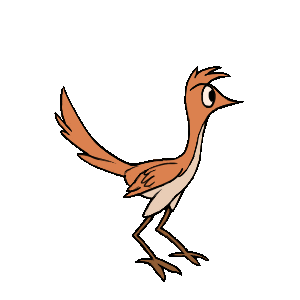
ROADRUNNER

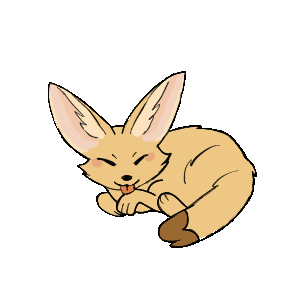
FENNEC FOX

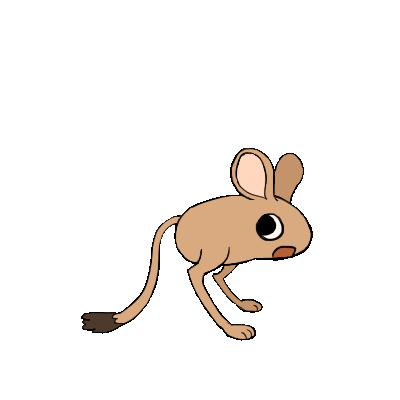
JERBOA
I made the majority of the animal animations for Desert Defusal. To make them, I first found reference images for our theme, which was strongly based on Looney Tunes. I looked at characters like Bugs Bunny and the Road Runner as references, but also real desert animals to add uniqueness to our character lineup.
Our team wanted to have cute animals on-screen to put stress on the player to cut faster, as the animals would explode and turn to piles of ash if the player lost. At the same time, we wanted them to look as cartoonish and clueless as possible. This is why I drew on big, simple eyes for all the characters, and exaggerated the short motions for each of them.
I had a lot of fun with the Jerboa in particular, and gave it a fun jumping entry animation as well (on the right).
I used Krita to draw and animate the sprites. Everything was animated at around 12 frames per second, and slowed/sped up as needed in Unity.
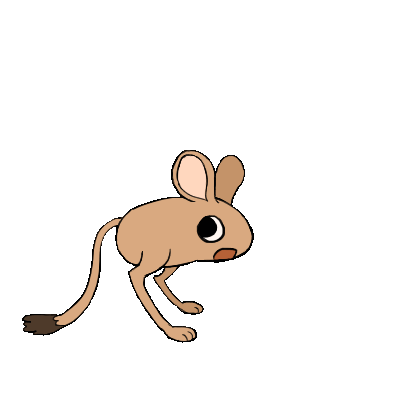
JERBOA (ENTRY)
UI + SPECIAL EFFECTS
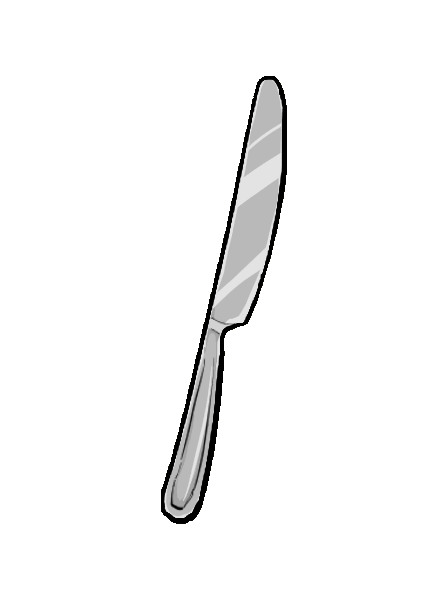
CURSOR

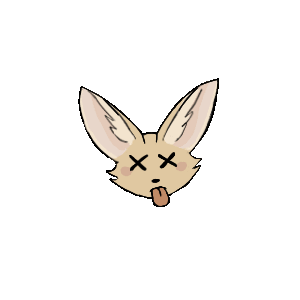

ROPE SPARK
CASUALTIES
BOMB EXPLOSION
I also made most of the UI and special effect art assets. This includes the player's butterknife-shaped cursor, the spark that goes down the bomb's rope, the casualties icon, and the explosion animation. They were made in the same way as the animal animations, in the art program called Krita. Again, for most of these I referenced the original Looney Tunes cartoons like Road Runner. It all fit together really well in the game at the end.
DESIGN - PROTOTYPING


As for design, I contributed a little bit everywhere, from brainstorming to prototyping. We approached this individually at first, researching and testing out microgames on our own, and taking notes. Then we created our own prototypes in various formats, mine being sketches and a short animation (shown above), and then came together to discuss. We went through quite a few ideas, but ended up settling on the desert-themed one centred around cutting a rope as the challenge. Later on, we named it Desert Defusal.


Above are some prototype sketches I made for Desert Defusal. These were posted on a Miro board shared between the team, so we could all show and tell, while making notes on the properties of a good microgame. The art on the right is made by Grace Yang.
In this prototype, I expanded on my teammate Grace's idea of having a cute animal on the bomb by showing multiple animals. Our team discussed how to make the player more tense and eager to cut the rope, and we agreed that having an animal there would make that happen.
From feedback we received from other Game Designers during Design Week, we also had the idea of having many animals gather around the bomb as time passes. And then we discussed it as a group and came up with a Casualty counter, which is shown in the second image here with red text. We toyed around with ideas for a two-player game mode, but decided that we wanted to try and make the best single-player mode we could with the skills we collectively had.
TAKEAWAYS
From working on Desert Defusal over the course of five days, I learned a lot about prioritization and what makes a game really fun. For prioritization, the main thing I learned was that in a list of action items, I should make sure that each one has a value. Tackle the ones that are most important to the game first, and then if I have time, work on the supporting elements. This is a philosophy I followed when making animations for the game. Regarding the learning about making a game fun, I actually came to the realization after we had our showcase of everyone's games. Looking around at everyone's' projects and my own, I realized that I was somewhat unsatisfied with our game. I was happy we finished it and got almost everything we planned to have in it, but I felt like we were missing some 'fun' factor.
I understood after playing others' games that it was because others' games were more frantic and mechanically interesting. While ours had something like that, which was the stressor to make players want to cut the rope as soon as possible, it felt a little too straightforward and simple. At least to me. It may have also been because it's a 1 player game, while some of the more enjoyable games were 2 player. In the future, I'll take these things into consideration when making a short game, or a game meant for more than one person.

